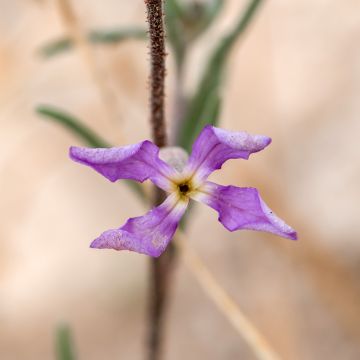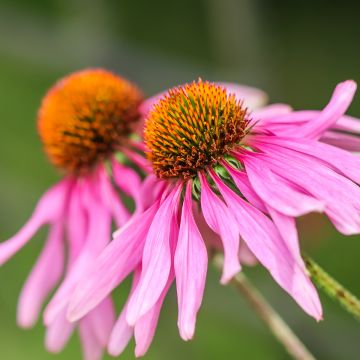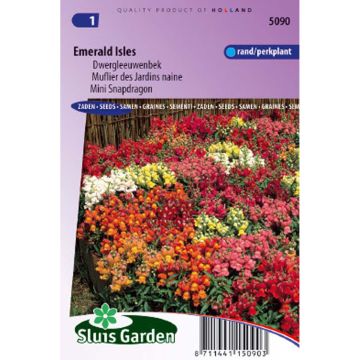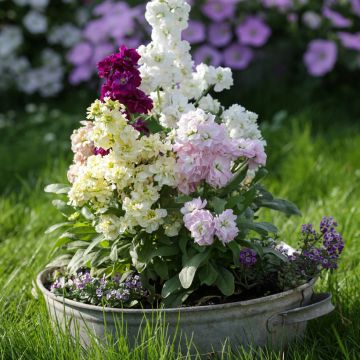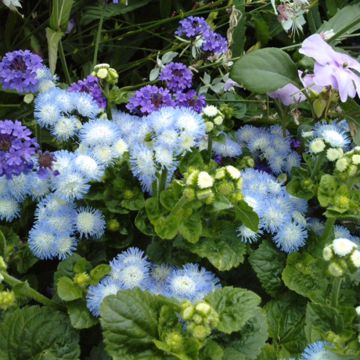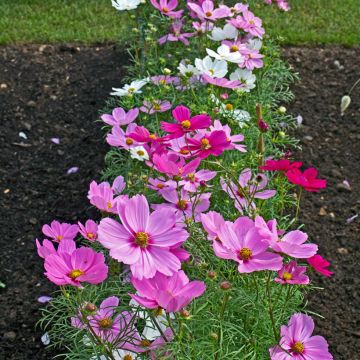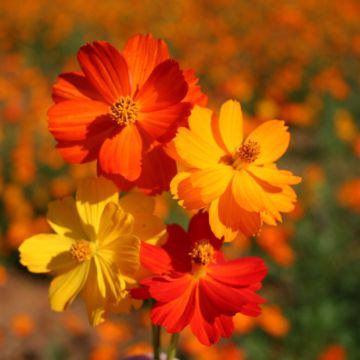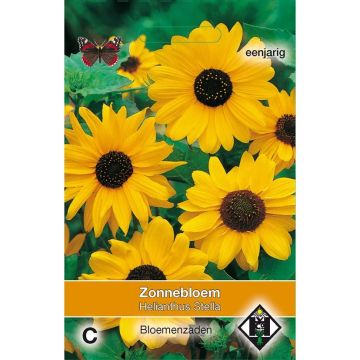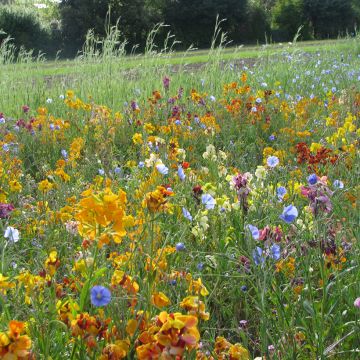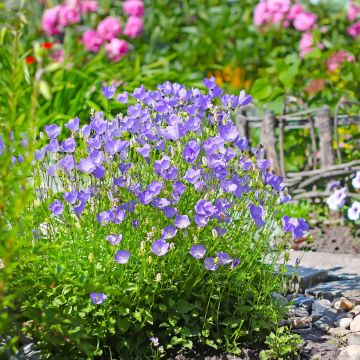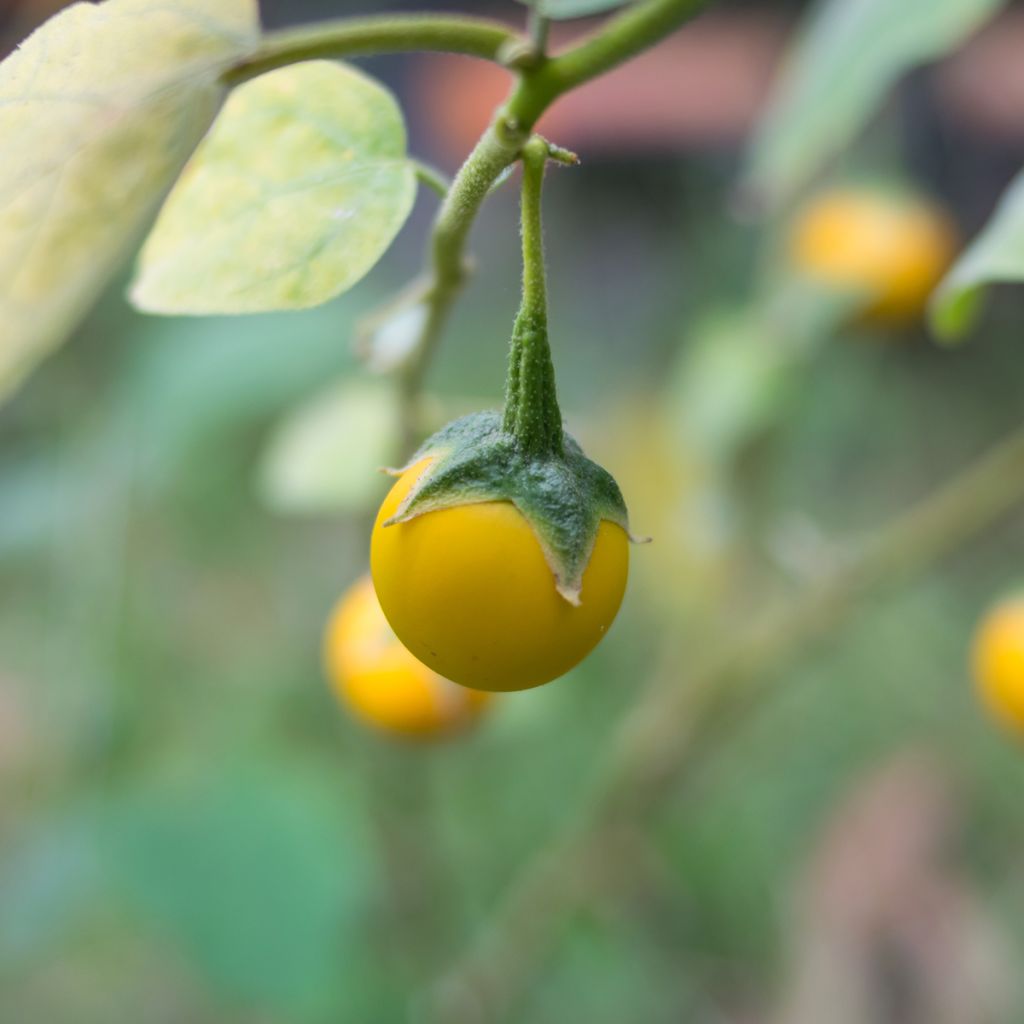

Aubergine Thai Yellow Egg
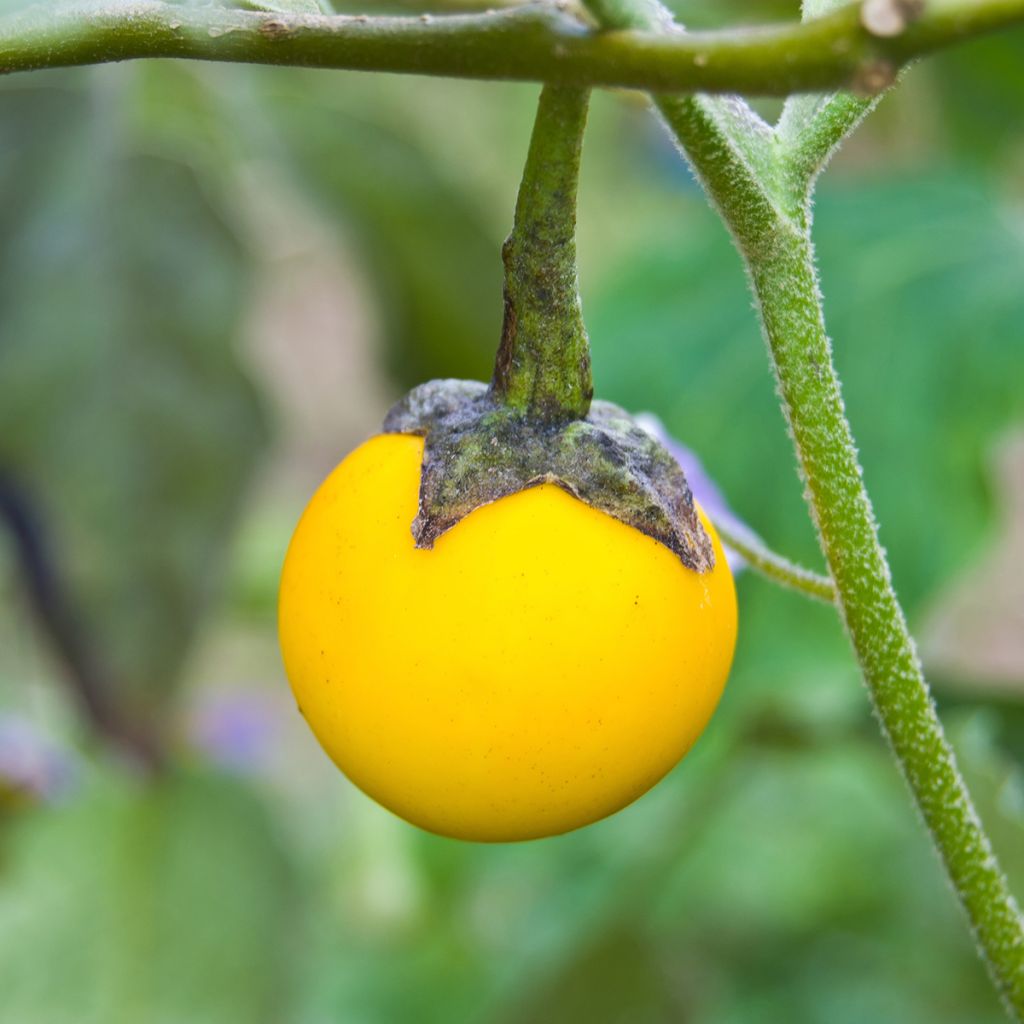

Aubergine Thai Yellow Egg
Aubergine Thai Yellow Egg
Solanum melongena Thai Yellow Egg
Aubergine, Eggplant
This item cannot be shipped to the selected country
Dispatch by letter from €3.90
More information
Schedule delivery date,
and select date in basket
This plant carries a 6 months recovery warranty
More information
We guarantee the quality of our plants for a full growing cycle, and will replace at our expense any plant that fails to recover under normal climatic and planting conditions.
Seed-only orders are dispatched by sealed envelope. The delivery charge for seed-only orders is €3.90.
Does this plant fit my garden?
Set up your Plantfit profile →
Description
The 'Thai Yellow Egg' aubergine is an annual plant with unique fruiting, also known as the Golden Egg Tree. Its lilac flowers bloom throughout the summer, followed by white egg-shaped fruits that turn golden yellow when ripe. It is purely an ornamental plant as its fruits are not very fleshy and are filled with seeds. It cannot tolerate frost, but when grown as an annual, it is attractive in summer and autumn. Sow in a warm environment from February to April, and the fruits appear from June to October.
Solanum melongena, commonly known as aubergine, belongs to the Solanaceae family, like potatoes, tomatoes, and bell peppers, as well as ornamental plants like Petunias or Daturas. It has been cultivated since ancient times for its fruit which is highly appreciated in many traditional cuisines. The variety 'Thai Yellow Egg', also known as 'Golden Egg', is classified as an ornamental aubergine. This Thai cultivar develops as a well-branched bush, reaching a height and spread of 0.60 m (2ft). The alternate oval-shaped, 10 to 15 cm (4 to 6in) long leaves are a beautiful glaucous green colour and are velvety on the top surface. From June to August, star-shaped inflorescences, about 2 cm (1in) in diameter, with a purple-violet corolla and yellow stamens in the centre appear in the leaf axils. After being pollinated by insects, each flower produces an ovoid, ivory white, 4 to 6 cm (2in) diameter fruit, with smooth skin, turning yellow when ripe, and containing numerous flat brown seeds.
The 'Thai Yellow Egg' aubergine is drought-tolerant and also tolerates hot and sunny conditions. Its small size and compact shape make it ideal for container or balcony and terrace gardening. It pairs well with ornamental peppers, such as the Numex Twilight Pepper, in red, orange, and yellow. It will be eye-catching in the vegetable garden, even though it has no nutritional value. Pairing it with Marigolds, Nasturtium, Zinnia, or even Borage will enhance the visual balance. In flower beds or borders, alongside colourful annuals or grasses, it offers the charm of a plant that stands out from the ordinary.
By allowing the fruits to dry on the plant, similar to colocynth, they become very decorative and last longer than any pumpkin.
Report an error about the product description
Aubergine Thai Yellow Egg in pictures


Flowering
Foliage
Plant habit
Botanical data
Solanum
melongena
Thai Yellow Egg
Solanaceae
Aubergine, Eggplant
Solanum melongena Golden Egg
Cultivar or hybrid
Other Flower seeds
Planting and care
The 'Thai Yellow Egg' Aubergine is easy to grow. Sunlight and heat are crucial for the success of this crop. It will thrive in any type of soil, but it prefers rich and well-drained soil. If the soil is too compact, you can add some coarse sand for drainage. It takes 70 to 90 days from sowing to the first fruits.
Hotbed sowing: From mid-February to the end of April, sow indoors or in heated greenhouses in trays at temperatures above 20°C (68°F). Germination is rapid between 20 and 35°C (68 and 95°F). Bury the seeds under 3 to 7 mm (0in) of special seed compost, as they need darkness to germinate. Do not use compost at this stage, as it may burn the future roots. Thai Yellow Egg Aubergine plants grow fast, the seeds usually sprout within one to two weeks. When the plants have two true leaves, think about transplanting them into pots. Keep the plants sheltered while providing good ventilation to acclimatise them to outdoor conditions.
Transplanting in open ground: Once the risk of frost has passed, usually after mid-May, and when the plants are 10 to 15 cm (4 to 6in) tall, transplant them to open ground. Choose the sunniest and warmest spots in the garden. The base of a south-facing wall is an ideal position. Loosen the soil and dig a hole at least 3 to 4 times the volume of the plant's root system. Add a little well-decomposed compost at the bottom. Space them about 30 cm (12in) apart. Firm the soil, create a basin around the plant, and then water generously. Be careful not to wet the leaves to protect your plants from fungal diseases. Adding mulch at the base of your plants helps retain some moisture and reduces the need for weeding. Thai Yellow Egg Aubergine plants do not need much watering, as their root system can reach deep for available resources. Water generously only during prolonged drought.
Transplanting to pots or large planters: Choose a pot that is at least 30 cm (12in) in diameter. Note that aubergines are sensitive to stagnant moisture, so choose a pot with drainage holes at the bottom for better drainage. Aubergines require rich, lightweight, slightly acidic to neutral pH soil. To provide them with essential nutrients for growth, it is best to use high-quality potting soil enriched with well-rotted compost. Water regularly to keep the soil consistently moist, but only water moderately each time to avoid waterlogging the soil and causing root rot.
Sowing period
Intended location
This item has not been reviewed yet - be the first to leave a review about it.
Haven't found what you were looking for?
Hardiness is the lowest winter temperature a plant can endure without suffering serious damage or even dying. However, hardiness is affected by location (a sheltered area, such as a patio), protection (winter cover) and soil type (hardiness is improved by well-drained soil).

Photo Sharing Terms & Conditions
In order to encourage gardeners to interact and share their experiences, Promesse de fleurs offers various media enabling content to be uploaded onto its Site - in particular via the ‘Photo sharing’ module.
The User agrees to refrain from:
- Posting any content that is illegal, prejudicial, insulting, racist, inciteful to hatred, revisionist, contrary to public decency, that infringes on privacy or on the privacy rights of third parties, in particular the publicity rights of persons and goods, intellectual property rights, or the right to privacy.
- Submitting content on behalf of a third party;
- Impersonate the identity of a third party and/or publish any personal information about a third party;
In general, the User undertakes to refrain from any unethical behaviour.
All Content (in particular text, comments, files, images, photos, videos, creative works, etc.), which may be subject to property or intellectual property rights, image or other private rights, shall remain the property of the User, subject to the limited rights granted by the terms of the licence granted by Promesse de fleurs as stated below. Users are at liberty to publish or not to publish such Content on the Site, notably via the ‘Photo Sharing’ facility, and accept that this Content shall be made public and freely accessible, notably on the Internet.
Users further acknowledge, undertake to have ,and guarantee that they hold all necessary rights and permissions to publish such material on the Site, in particular with regard to the legislation in force pertaining to any privacy, property, intellectual property, image, or contractual rights, or rights of any other nature. By publishing such Content on the Site, Users acknowledge accepting full liability as publishers of the Content within the meaning of the law, and grant Promesse de fleurs, free of charge, an inclusive, worldwide licence for the said Content for the entire duration of its publication, including all reproduction, representation, up/downloading, displaying, performing, transmission, and storage rights.
Users also grant permission for their name to be linked to the Content and accept that this link may not always be made available.
By engaging in posting material, Users consent to their Content becoming automatically accessible on the Internet, in particular on other sites and/or blogs and/or web pages of the Promesse de fleurs site, including in particular social pages and the Promesse de fleurs catalogue.
Users may secure the removal of entrusted content free of charge by issuing a simple request via our contact form.
The flowering period indicated on our website applies to countries and regions located in USDA zone 8 (France, the United Kingdom, Ireland, the Netherlands, etc.)
It will vary according to where you live:
- In zones 9 to 10 (Italy, Spain, Greece, etc.), flowering will occur about 2 to 4 weeks earlier.
- In zones 6 to 7 (Germany, Poland, Slovenia, and lower mountainous regions), flowering will be delayed by 2 to 3 weeks.
- In zone 5 (Central Europe, Scandinavia), blooming will be delayed by 3 to 5 weeks.
In temperate climates, pruning of spring-flowering shrubs (forsythia, spireas, etc.) should be done just after flowering.
Pruning of summer-flowering shrubs (Indian Lilac, Perovskia, etc.) can be done in winter or spring.
In cold regions as well as with frost-sensitive plants, avoid pruning too early when severe frosts may still occur.
The planting period indicated on our website applies to countries and regions located in USDA zone 8 (France, United Kingdom, Ireland, Netherlands).
It will vary according to where you live:
- In Mediterranean zones (Marseille, Madrid, Milan, etc.), autumn and winter are the best planting periods.
- In continental zones (Strasbourg, Munich, Vienna, etc.), delay planting by 2 to 3 weeks in spring and bring it forward by 2 to 4 weeks in autumn.
- In mountainous regions (the Alps, Pyrenees, Carpathians, etc.), it is best to plant in late spring (May-June) or late summer (August-September).
The harvesting period indicated on our website applies to countries and regions in USDA zone 8 (France, England, Ireland, the Netherlands).
In colder areas (Scandinavia, Poland, Austria...) fruit and vegetable harvests are likely to be delayed by 3-4 weeks.
In warmer areas (Italy, Spain, Greece, etc.), harvesting will probably take place earlier, depending on weather conditions.
The sowing periods indicated on our website apply to countries and regions within USDA Zone 8 (France, UK, Ireland, Netherlands).
In colder areas (Scandinavia, Poland, Austria...), delay any outdoor sowing by 3-4 weeks, or sow under glass.
In warmer climes (Italy, Spain, Greece, etc.), bring outdoor sowing forward by a few weeks.

































